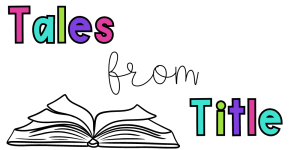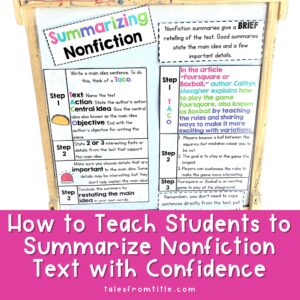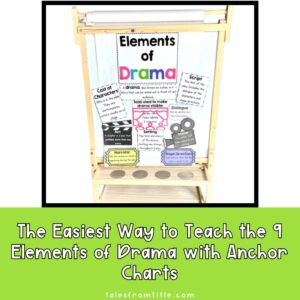Helping students understand the difference between fiction and nonfiction is essential when teaching reading. When I taught third and fourth grade, every year about half of my class knew the difference between fiction and nonfiction text. Once I became a reading specialist and started teaching small groups, I was lucky if I had a student in my group who knew the difference. In this blog post, we are going to take a look at the key components of fiction your students need to know.

Characters
Characters are the heart and soul of fiction and the driving force behind any story. In fiction text we encounter heroes, villains, and a vast array of complex individuals that give life to our story and draw readers in.
Characters can be people, animals, objects, or creatures. Throughout a story they grow, change, and face difficulties as they face problems and try to solve them.

Setting
The setting serves as the canvas upon which a story unfolds. Setting describes both the time and place where a story takes place. It also plays a significant role in shaping the mood and atmosphere of the text.
A well-crafted setting transports readers to a different world, allowing them to experience the story’s events alongside the characters. Whether it’s a bustling city, a magical kingdom, or a dystopian future, a vividly described setting adds depth and richness to the overall reading experience.

Plot
The plot is where the magic happens so to speak. Plot is the sequence of events that create tension, suspense, and anticipation that pulls readers deeper into the story. Without a plot, a story cannot move forward. Students need to understand plot includes: exposition, rising action, climax, falling action, and resolution.

Problem & Solution
Every captivating story presents a problem that needs solving. It could be an external conflict, such as a battle against evil forces, or an internal struggle within a character’s mind. The problem acts as a catalyst, propelling the story forward and keeping readers engaged.
Alongside the problem comes the solution, which ultimately leads to the resolution of the conflict. Understanding the problem and solution dynamic allows us to appreciate the growth and transformation of characters throughout the story.

Point of View
The point of view determines who tells the story and from whose perspective it is narrated. It adds depth and complexity to the narrative, as different points of view offer unique insights into the characters and events. Whether it’s first-person, third-person limited, objective, or omniscient, each point of view brings its own set of advantages and limitations. Exploring different points of view not only enhances our understanding of the story but also broadens our perspective on the world around us.

Conclusion
By understanding the crucial elements of fiction: characters, setting, plot, problem and solution, and point of view, we can help our students in their ability to know the difference between fiction and nonfiction text.
Looking for tools to help you teach the characteristics of fiction text? Check out my fiction anchor charts and interactive notebook pages!






